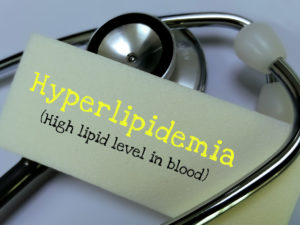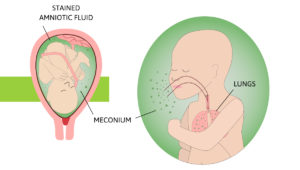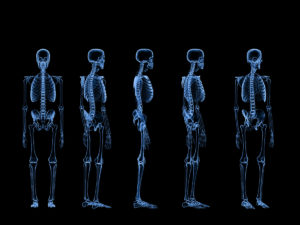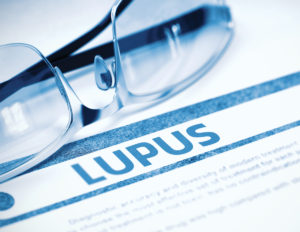 Providers often use the terms hyperlipidemia and hypercholesterolemia interchangeably. Technically, hyperlipidemia is a high or elevated lipid/fat level in the blood. High blood cholesterol is a lipid disorder. As a result, when hyperlipidemia and hypercholesterolemia are both documented in the record, only assign code E78.00 (Pure hypercholesterolemia) per Coding Clinic, Second Quarter 2022. On the other hand, when ‘mixed hyperlipidemia’ and ‘hypercholesterolemia’ are both documented, assign code E78.2 (Mixed hyperlipidemia). In this example, hypercholesterolemia is included in the E78.2 code.
Providers often use the terms hyperlipidemia and hypercholesterolemia interchangeably. Technically, hyperlipidemia is a high or elevated lipid/fat level in the blood. High blood cholesterol is a lipid disorder. As a result, when hyperlipidemia and hypercholesterolemia are both documented in the record, only assign code E78.00 (Pure hypercholesterolemia) per Coding Clinic, Second Quarter 2022. On the other hand, when ‘mixed hyperlipidemia’ and ‘hypercholesterolemia’ are both documented, assign code E78.2 (Mixed hyperlipidemia). In this example, hypercholesterolemia is included in the E78.2 code.
 Meconium gives the amniotic fluid a greenish color. This is called meconium staining. Coding Clinic, Second Quarter 2022 clarifies ‘light meconium-stained fluid’ and how to code it. The presence of any meconium staining may indicate fetal distress, therefore code O77.0 (Labor and delivery affected by meconium in amniotic fluid) is appropriate to code if documented as such. There does not need to be documentation of fetal distress or maternal conditions to code.
Meconium gives the amniotic fluid a greenish color. This is called meconium staining. Coding Clinic, Second Quarter 2022 clarifies ‘light meconium-stained fluid’ and how to code it. The presence of any meconium staining may indicate fetal distress, therefore code O77.0 (Labor and delivery affected by meconium in amniotic fluid) is appropriate to code if documented as such. There does not need to be documentation of fetal distress or maternal conditions to code.
2022 ICD-10-CM CODE O77.0
Today’s Tip: The Eliquis Coding Conundrum
 Eliquis can be used as an anticoagulant or an antithrombotic. When a patient is on Eliquis long-term, it can be a coding conundrum. As published in Coding Clinic, Second Quarter 2022, ICD-10-CM classifies Eliquis as an anticoagulant medication. Therefore, if long-term use of Eliquis is documented in the record, assign code Z79.01 (The long-term (current) use of anticoagulants).
Eliquis can be used as an anticoagulant or an antithrombotic. When a patient is on Eliquis long-term, it can be a coding conundrum. As published in Coding Clinic, Second Quarter 2022, ICD-10-CM classifies Eliquis as an anticoagulant medication. Therefore, if long-term use of Eliquis is documented in the record, assign code Z79.01 (The long-term (current) use of anticoagulants).
 This condition is commonly documented along with chronic kidney disease (CKD). MBD is a broad term used to describe a group of bone disorders of bone strength usually caused by mineral abnormalities such as calcium, phosphorus, vitamin D, or magnesium. As published in Coding Clinic, Second Quarter 2022, when MBD is a component of another disease process, only the underlying condition (e.g., secondary hyperparathyroidism or renal osteodystrophy) is coded. If no underlying condition is documented, code the appropriate code from subcategory M89.8X-.
This condition is commonly documented along with chronic kidney disease (CKD). MBD is a broad term used to describe a group of bone disorders of bone strength usually caused by mineral abnormalities such as calcium, phosphorus, vitamin D, or magnesium. As published in Coding Clinic, Second Quarter 2022, when MBD is a component of another disease process, only the underlying condition (e.g., secondary hyperparathyroidism or renal osteodystrophy) is coded. If no underlying condition is documented, code the appropriate code from subcategory M89.8X-.
Following Oracle’s $28.4 billion acquisition of Cerner Corporation, board chair and CTO Larry Ellison announced his vision of a national health records database. Health IT Answers reached out to Intellis Chief Operations Officer Glenn Schweidler, RHIA, and other industry leaders to find out what they think about developing a national health records database. https://www.healthitanswers.net/leaders-weigh-in-on-oracle-acquisition-and-new-vision/
Today’s Tip: Lupus When Lupus (unspecified) is documented in a record, there is no default code. Therefore, it is important to have providers document this condition as precisely as possible.
When Lupus (unspecified) is documented in a record, there is no default code. Therefore, it is important to have providers document this condition as precisely as possible.
For instance, document SLE (systemic lupus erythematosus) instead and add any complications that accompany this diagnosis. It is often accompanied by Sjogren’s syndrome or Sicca syndrome, which have very specific codes. Another solution is to develop facility or provider-specific guidelines to report M32.9 (SLE, unspecified) as a default for Lupus, unspecified.

Intellis is pleased to announce the addition of Lori Harbison, LPN, CCDS, CDIP, CCS as our Manager of Clinical Documentation and Quality Services.
Lori brings over 30 years of experience in nursing, including 13 years of experience in Clinical Documentation Integrity. A proven subject matter expert with a deep understanding of review, audit, and education, Lori is respected for her contributions and vast knowledge in the Clinical Documentation field.
Lori is a credentialed CDI specialist holding a CDIP from AHIMA and a CCDS from ACDIS. Additionally, Lori is a clinical LPN and credentialed CCS. Lori’s philosophy is built on the principle that to meaningfully affect clinical documentation, the physician, CDS, and coder must work together as a cohesive unit. She is committed and passionate about fostering and advancing physician engagement and clinical documentation integrity education. Lori has developed and presented customized education programs for individual physicians, large-scale physician groups, and health care systems, which has driven increased physician engagement and quality documentation. Lori is recognized for the advancement of the CDI profession by her work on many innovative targeted projects, including early adoption of CDI at patient round table discussions and CDI discussion at physician rounding and other progressive initiatives.
Prior to joining Intellis, Lori led the CDI training program at the Cleveland Clinic for 13 years. As the Quality and Education Coordinator, Lori was charged with the comprehensive training of clinical nurses, coders, and HIM professionals in their complete education as CDI specialists. In this capacity, she developed detailed training programs and continuing education for the growth and development of skilled and experienced CDI specialists. Lori is an accomplished educator and mentor with a proven record of successfully training adult learners. Lori prides herself on the long-term accomplishments of her trainees, many of whom hold CDI leadership positions as well as other health care executive roles.
Certifications
- Certified Clinical Documentation Specialist (CCDS)
- Certified Clinical Documentation Practitioner (CDIP)
- Certified Coding Specialist (CCS)
- Licensed Practical Nurse (LPN)
Industry Areas
- Inpatient clinical documentation integrity
- Clinical documentation education-physician
- Clinical documentation education-CDI specialist
- Medical Record Review and Auditing
- Query compliance
- Inpatient Coding
# # #
Media Contact:
Dan Cooke, President
 Drug-induced neuropathy (D62.0) is a diagnosis often missed by even the savviest and seasoned coders. It is sometimes seen in documentation as ‘CIPN’ (chemotherapy-induced peripheral neuropathy) and is a common side effect caused by antineoplastic agents. Treatment includes steroids and nerve pain medication such as Gabapentin.
Drug-induced neuropathy (D62.0) is a diagnosis often missed by even the savviest and seasoned coders. It is sometimes seen in documentation as ‘CIPN’ (chemotherapy-induced peripheral neuropathy) and is a common side effect caused by antineoplastic agents. Treatment includes steroids and nerve pain medication such as Gabapentin.
Drugs related to neuropathy
The most likely chemotherapy drugs related to neuropathy include platinum drugs, such as oxaliplatin; taxanes, such as docetaxel; vinca alkaloids, such as vincristine; and myeloma treatments, such as bortezomib. This code can also be accompanied by another code for the adverse effect (T36-T50) to identify the drug.
In the Know – March 2022For March 2022, our IN THE KNOW newsletter focuses on:
-
Ransomware Recovery
• Earning CEUs
• Employment Opportunities
• Welcoming Elaine Lips
• Coding Tips

Intellis is honored to announce the addition of Elaine Lips, RHIA, SHIMSS as Business Development Strategist to support company growth ambitions and client expansion initiatives in the Western Region of the U.S.
“I’m pleased and inspired to join Intellis to expand their western region client presence.” — Elaine Lips, RHIA, SHIMSS
An innovator with an entrepreneurial spirit, Elaine comes to Intellis with over 40 years of experience in healthcare consulting and information services. She has owned two successful national Health Information Management (HIM)/Mid Revenue Cycle consulting firms. She has held various leadership roles, including strategic business planning, development, operational management using best practices, clinical documentation improvement, and mid revenue cycle outsourcing.
Elaine is an Advanced Member of the Healthcare Financial Management Association (HFMA) and Senior Member of the Health Information Management Systems Society (HIMSS). Further, she has been active with the American Health Information Management Association (AHIMA), and she was elected and served on the California Health Information Association (CHIA) board of directors.
Currently serving on the Editorial Board for HcPRO’s HIM Briefings, Elaine is a frequent speaker and author. She was the recipient of AHIMA’s Visionary Award and CHIA’s Industry Champion award.
Elaine’s proactive approach, respected thought leadership, extensive client development experience, and strong communication skills will help drive innovation and fuel our growth through client expansion as she begins her partnership with Intellis.
# # #
Media Contact:
Dan Cooke, President
 Cachexia (R64) is also known as ‘wasting’ or ‘wasting syndrome’. It is a general state of weakness involving marked weight and muscle loss. Emaciated is another term that may be found in the documentation that also maps to code R64.
Cachexia (R64) is also known as ‘wasting’ or ‘wasting syndrome’. It is a general state of weakness involving marked weight and muscle loss. Emaciated is another term that may be found in the documentation that also maps to code R64.
These diagnoses are often missed since they are commonly only seen in the Physical Exam or Review of Systems portion of a record. There are often ‘knee-jerk’ reactions that can lead a coder to investigate further if a patient may have these diagnoses.
What to look for
Cachexia is commonly seen in patients who have AIDS, cancer, or other advanced heart or lung disease. You will often see a lack of appetite, fatigue, low BMI, and malnutrition. Look for nutritional consults and a PEG tube in the documentation to trigger the search for cachexia in the documentation.
Why is this so important?
Cachexia is a diagnosis that can affect reimbursement for both Inpatient and Risk Adjustment. Don’t miss it!
E/M Hot Topic: Telemedicine Update
Jeanie Heck, our Director of Education, begins our 2022 series of E/M Hot Topics with a discussion on Telemedicine. January’s Hot Topic provides an update from the CMS Final Rule as well as some reliable and reputable sources of information regarding telehealth.
For additional information about E/M Guideline Updates education, contact us.
Follow us on LinkedIn to keep up-to-date.
